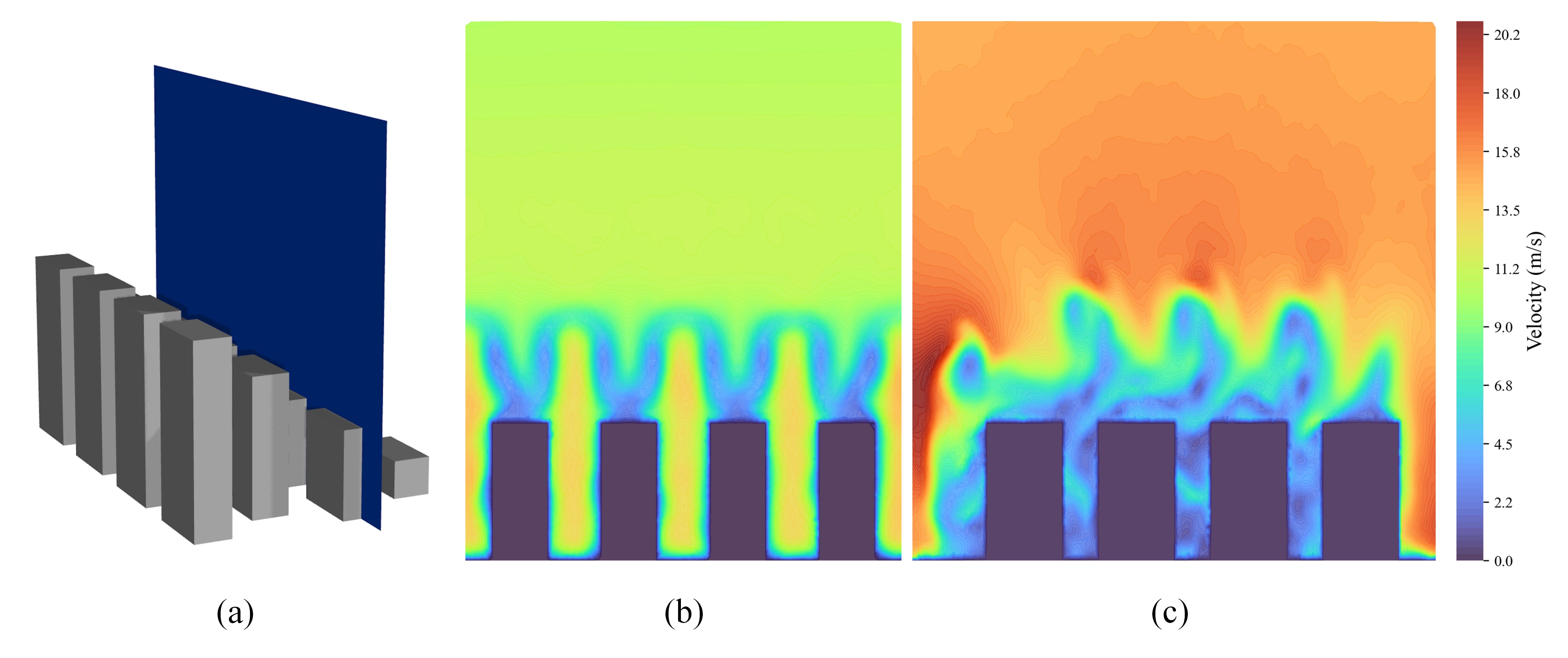To model 3D urban forms using Computational Fluid Dynamics and Python for exmining the intricate relationship between urban form and wind behavior
Energy & Environment
Mitacs
Description
Urban wind velocity significantly influences the microclimates of cities, affecting pedestrian comfort, energy efficiency, and structural safety. Predicting urban wind patterns is crucial for sustainable urban design. This project presents a framework for developing 3D urban forms using Python and explores the intricate relationship between urban form and wind behavior. The approach combines Computational Fluid Dynamics (CFD) simulations with machine learning (ML) techniques to investigate wind dynamics and develop predictive models for wind velocity. The framework automates the generation of diverse 3D urban forms with variations in parameters such as street width, building dimensions, staggering coefficient, and aspect ratio. Wind velocity data was extracted from locations above and between buildings for training ML models. The trained models demonstrated robust performance, achieving an average mean squared error (MSE) of 2.73×10-2, mean absolute error (MAE) of 1.402×10-1, and an R-squared (R2) value of 8.268×10-1.







